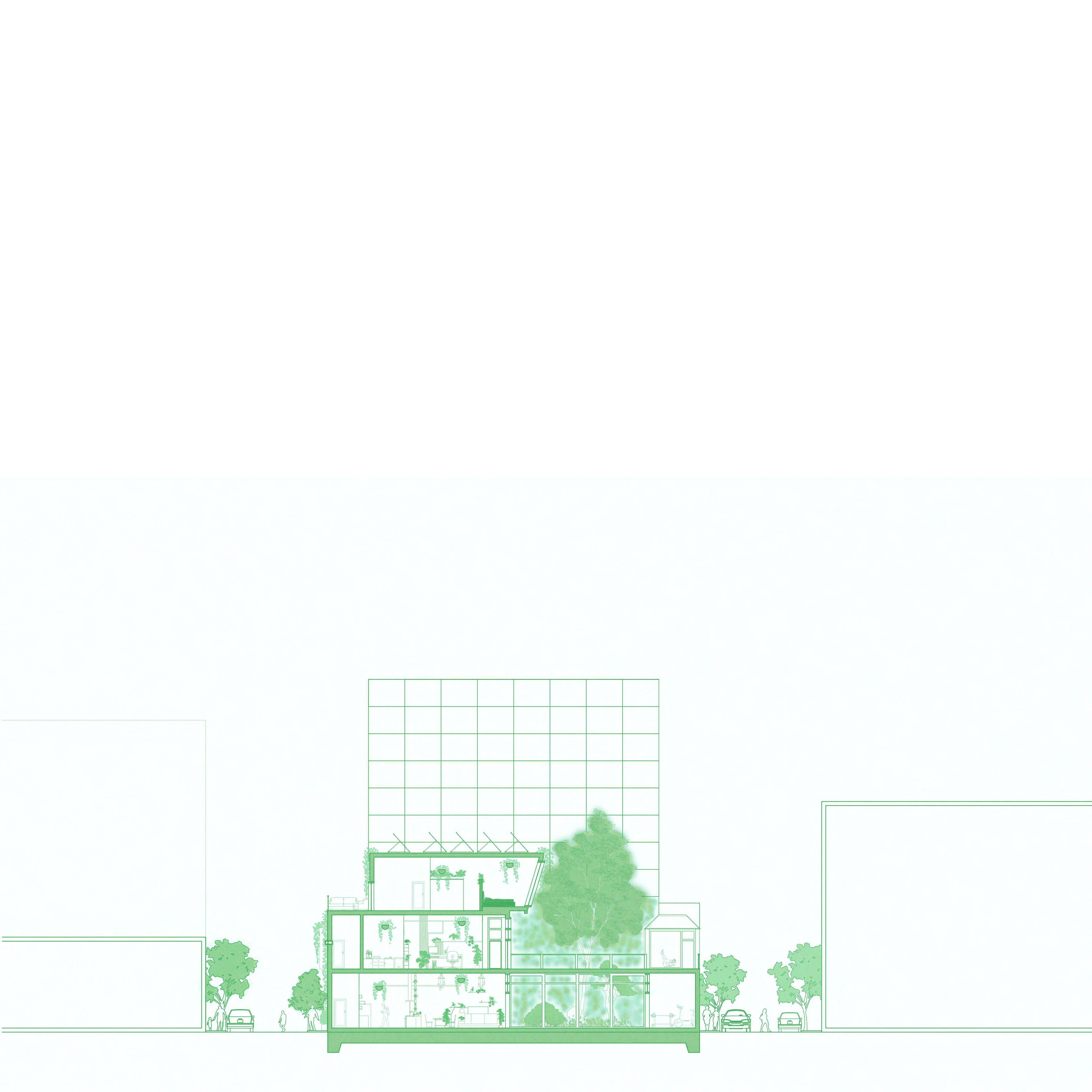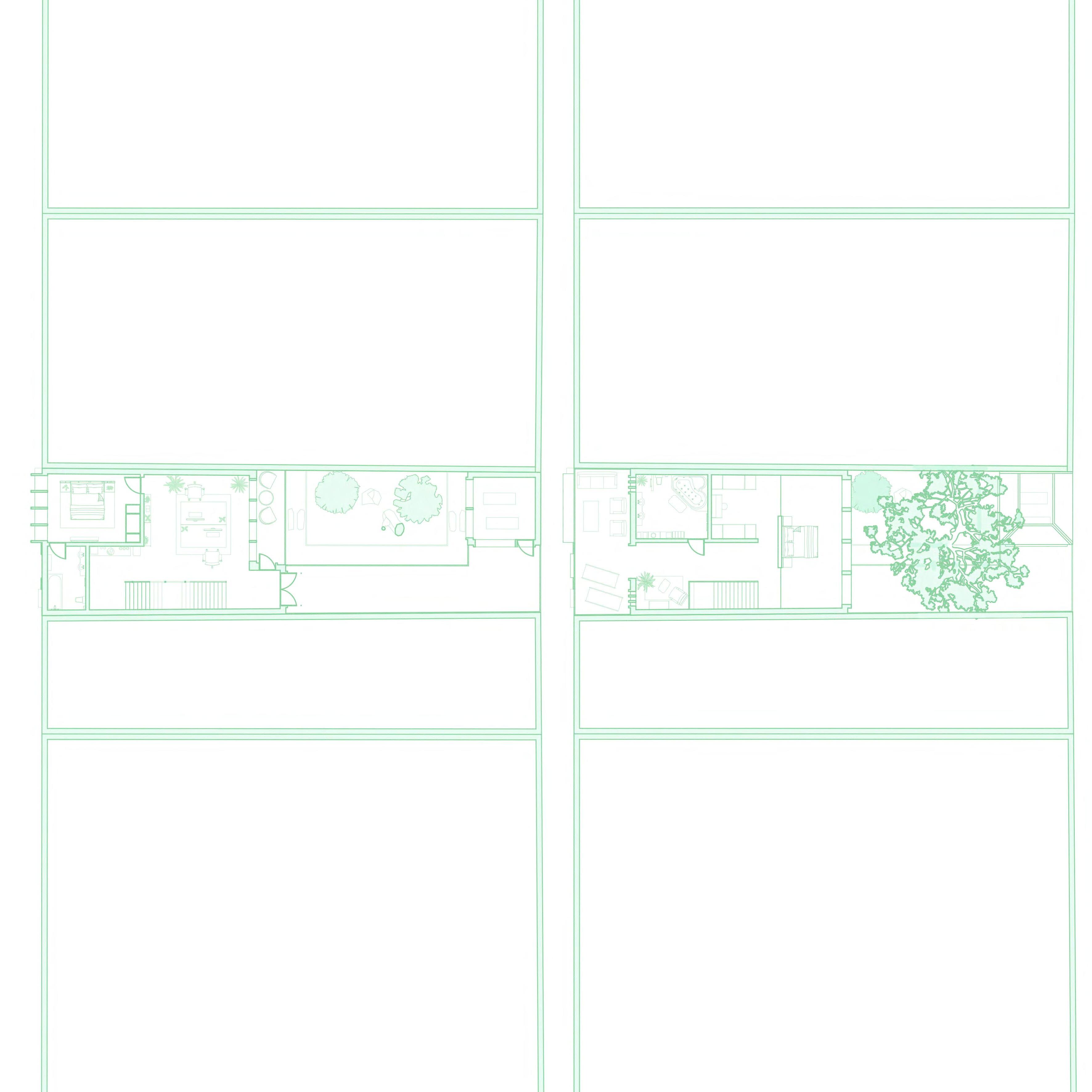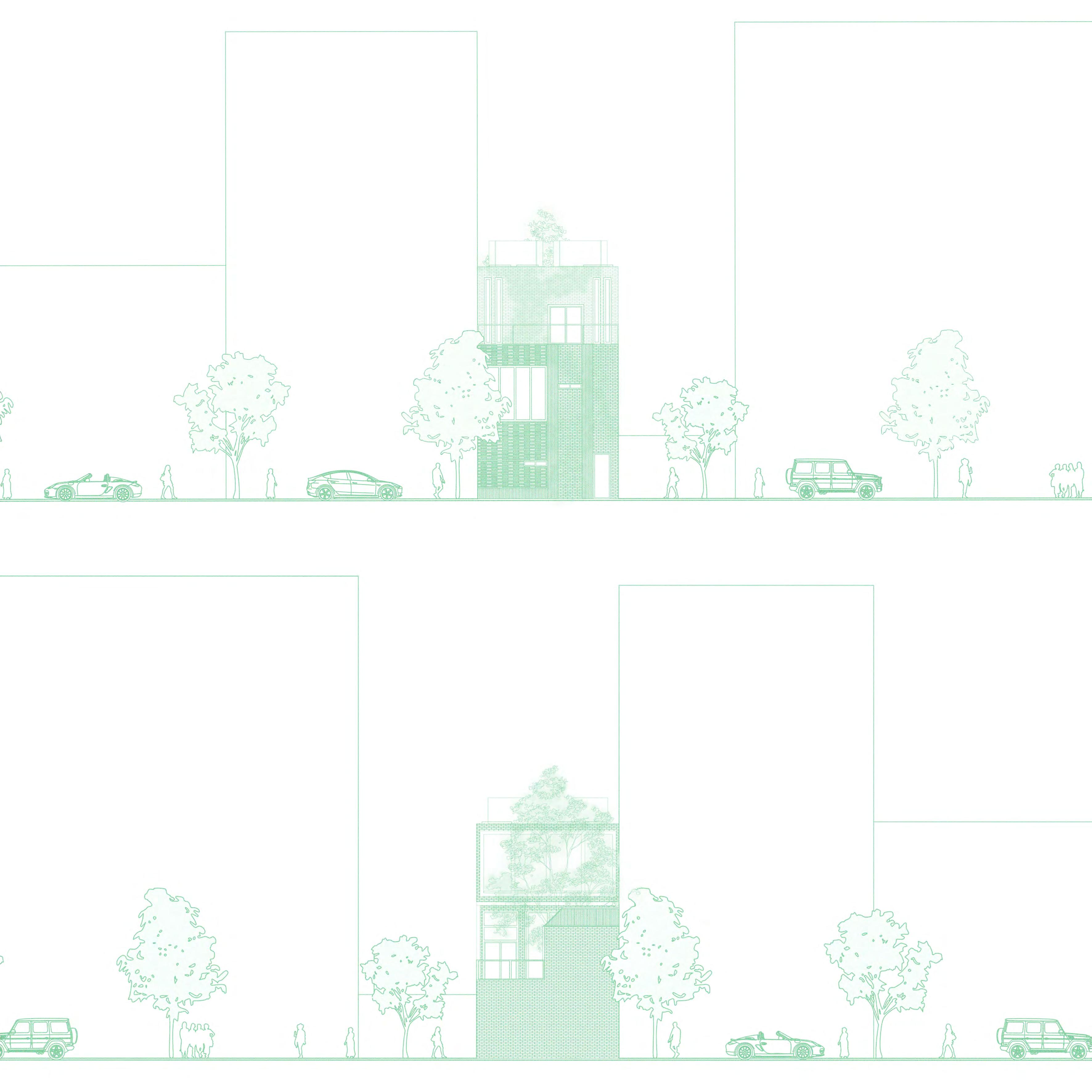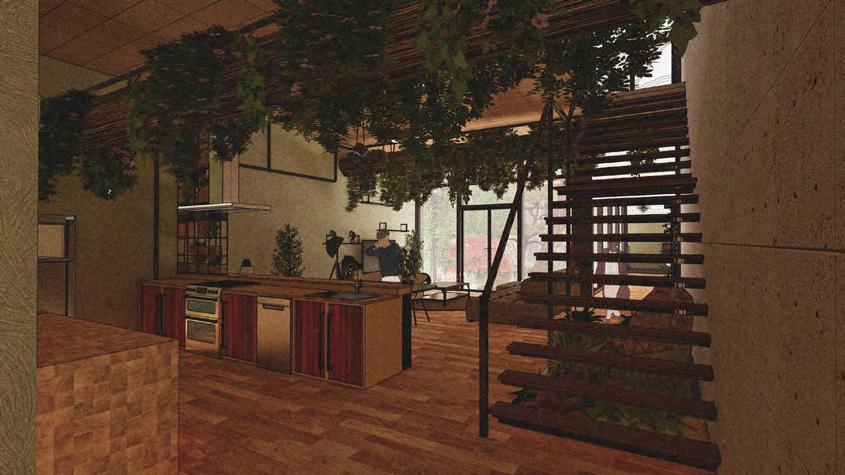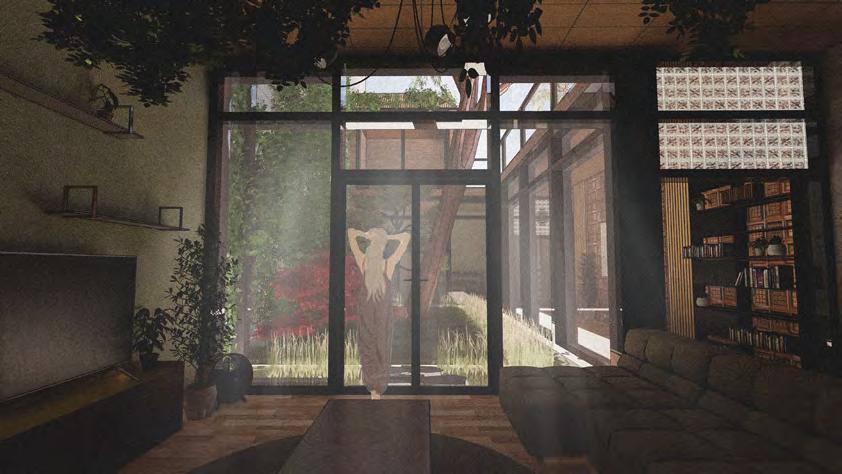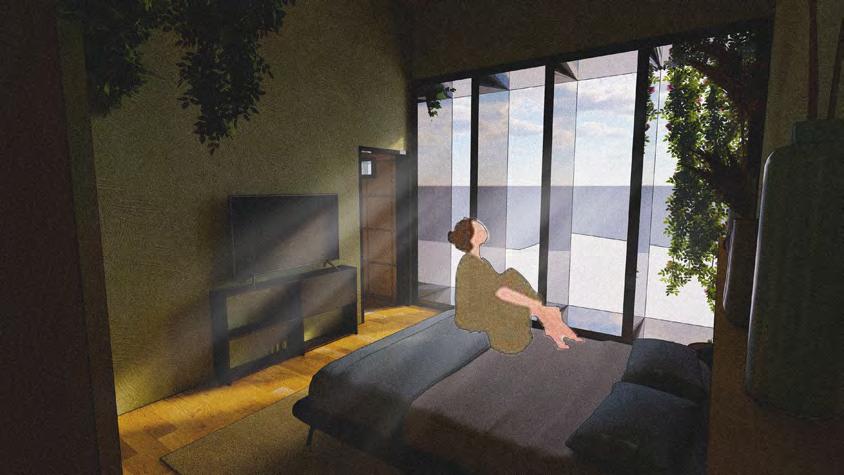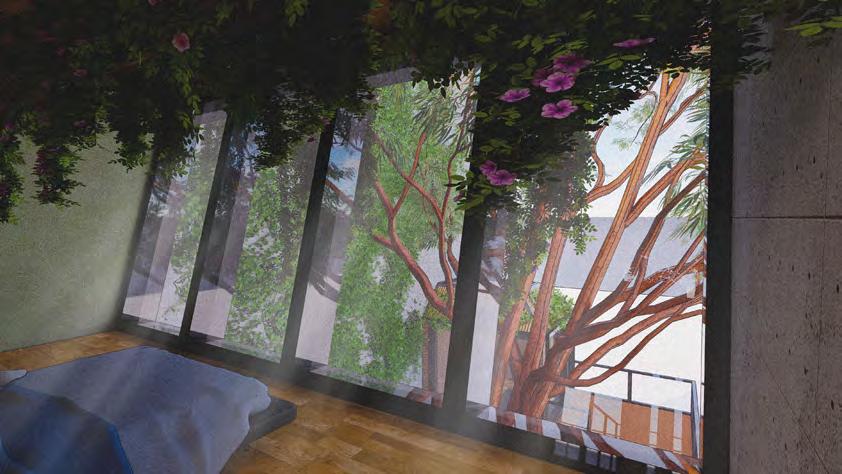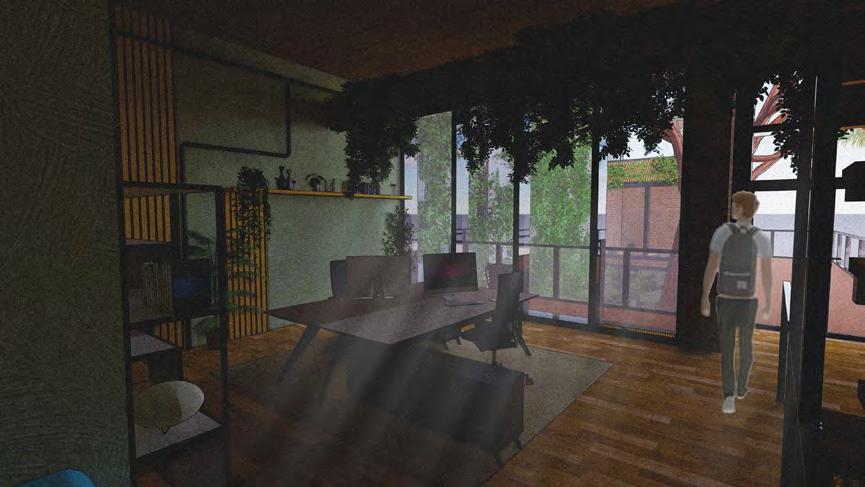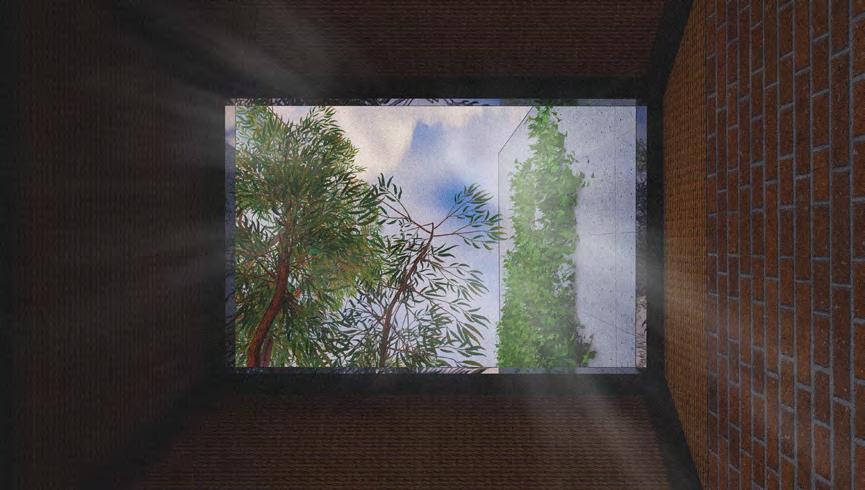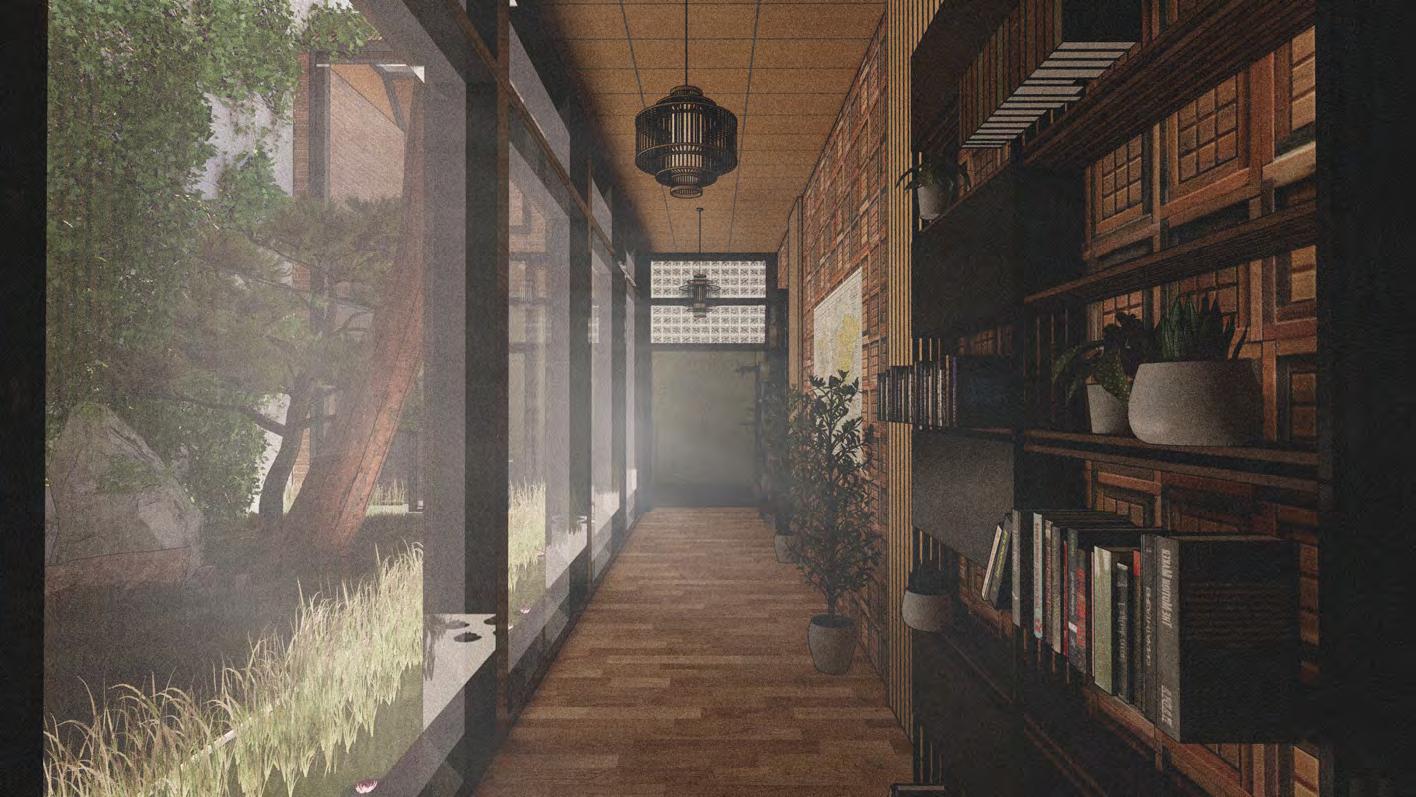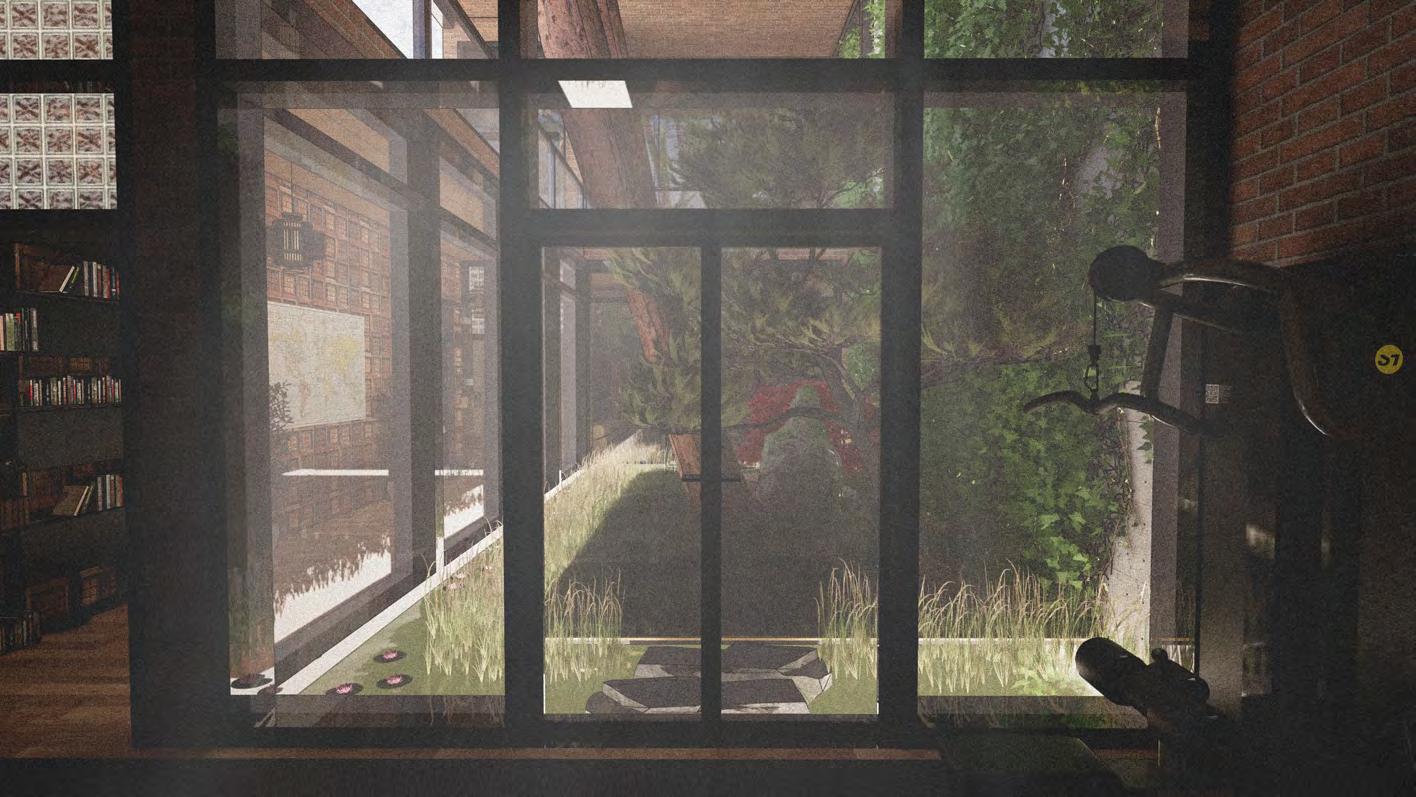YEARNING TO BREATHE
LA VIE EN VERT: THE MELBOURNE ARBORETUM
This project was a competition work I had undertaken after completing my university studies. My collaborator, Ivor Gabric, and I had to create a home focused on biomimicry and the influence of nature on day-to-day life, either through the fauna used throughout the project, materials used, or even patterns utilised. The competition required us to choose a location anywhere in the world, and we decided to opt for Melbourne, Australia, due to its rapid urbanisation and favourable climate for many plant species.
We faced a primary concern of maximising sunlight in the home throughout the dwelling as the home was situated between two tall buildings. Careful consideration went into selecting materials that would create a warm and welcoming environment while still being intertwined with concrete to show the connection between modern construction and a more nature-focused feel for our homes. All the window surrounds were finished in dark brushed aluminium, which was done because the surrounding buildings have similar materials used for cladding. We wanted to create a home that would not stand out too much from the surrounding area but be an oasis once you step inside.
The home’s ground floor wraps around the central garden, accessed from the living room and the gym area. A long corridor connects the gym and the living room, which is used as a library with direct views of the garden. The library creates an atmosphere of peace and tranquillity, perfect for reading and relaxing.
Moving up to the first floor, you will find the home office and the guest room. The office provides an excellent view of the canopy growing from the central garden, while the guest room offers comfortable accommodation for visitors. A walkway overlooks the library’s roof below leads to the yoga studio. The studio is surrounded by windows, creating an airy and open feel with a big skylight, perfect for meditation and yoga.
Finally, the main bedroom is located on the top floor, with its balcony facing the street and a big window angled downwards to provide occupants with a direct view of the very bottom of the garden. The home’s design is such that it is a perfect blend of modern and natural elements, creating a seamless connection between the two.
This stunning building uses cutting-edge technology and design to create a self-sustaining ecosystem that’s beautiful and functional. From the lush greenery that covers its exterior to the solar panels that power its systems, every aspect of ‘LA VIE EN VERT: THE MELBOURNE ARBORETUM’ is designed with sustainability in mind.
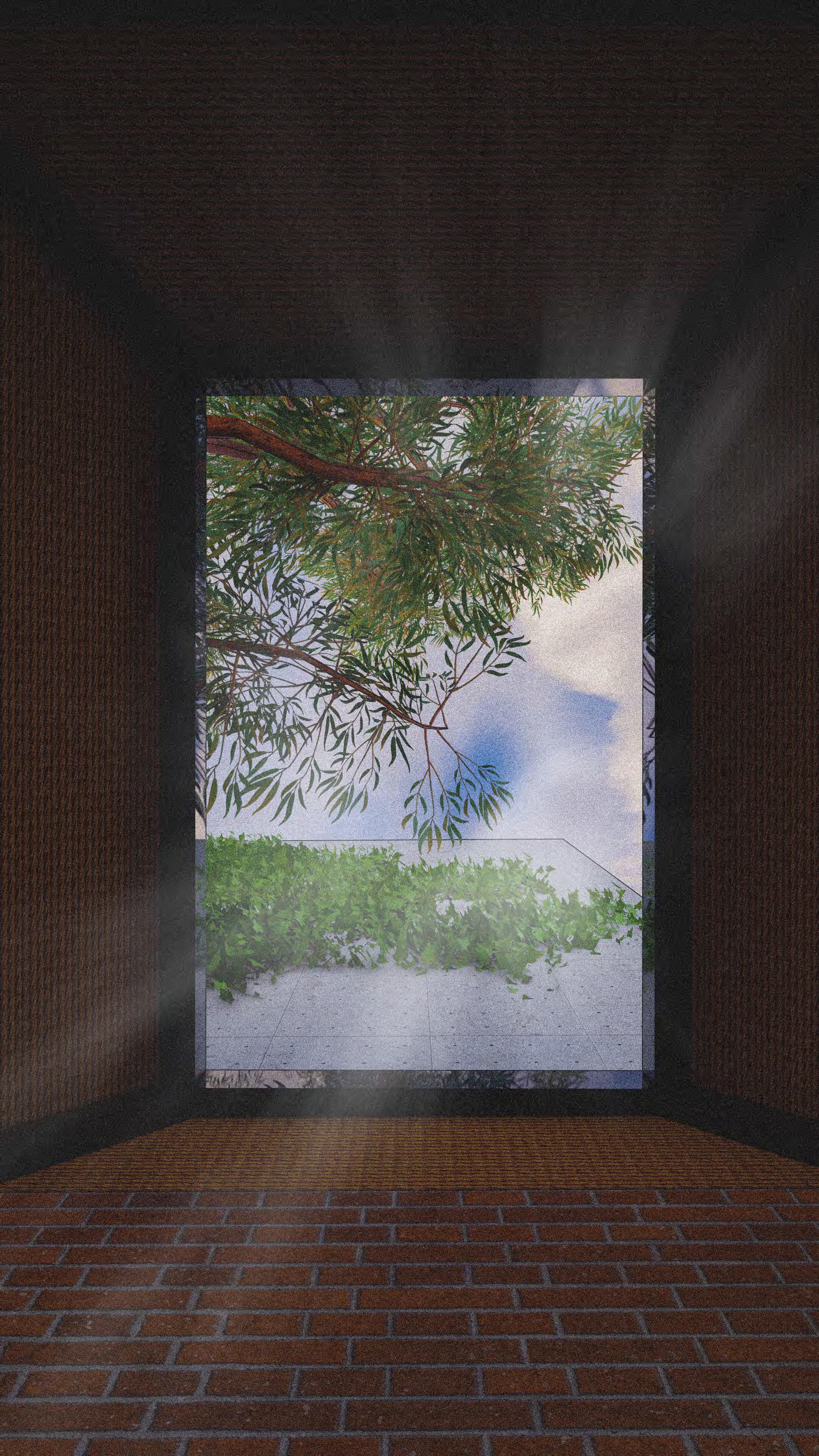
Nestled on the southeastern coast of Australia, Melbourne captivates visitors with its unique blend of cosmopolitan charm and natural beauty. Renowned as Australia’s cultural capital, Melbourne boasts a vibrant arts scene, eclectic neighbourhoods, and a rich tapestry of history and heritage. Melbourne experiences a temperate climate characterized by four distinct seasons, each offering its allure and opportunities for exploration.
In Melbourne, nature is not merely a backdrop but an inseparable part of daily life, intricately woven into the city’s urban landscape. Whether it’s relishing the tranquillity of a sunrise, embarking on a bushwalk in the nearby national parks, or simply enjoying a leisurely stroll along the city streets adorned with century-old trees, Melbourne presents limitless opportunities to immerse yourself in the beauty of the natural world.
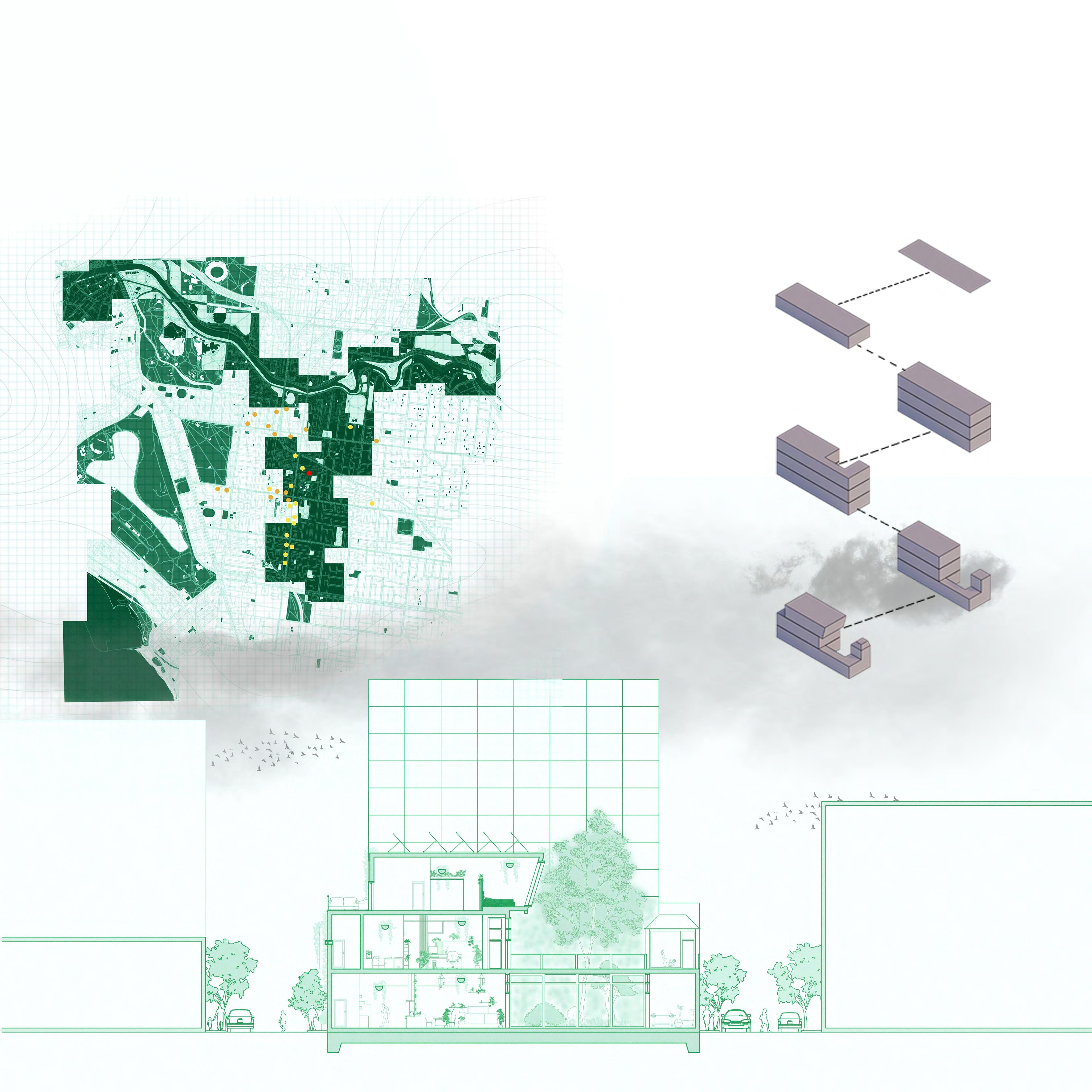

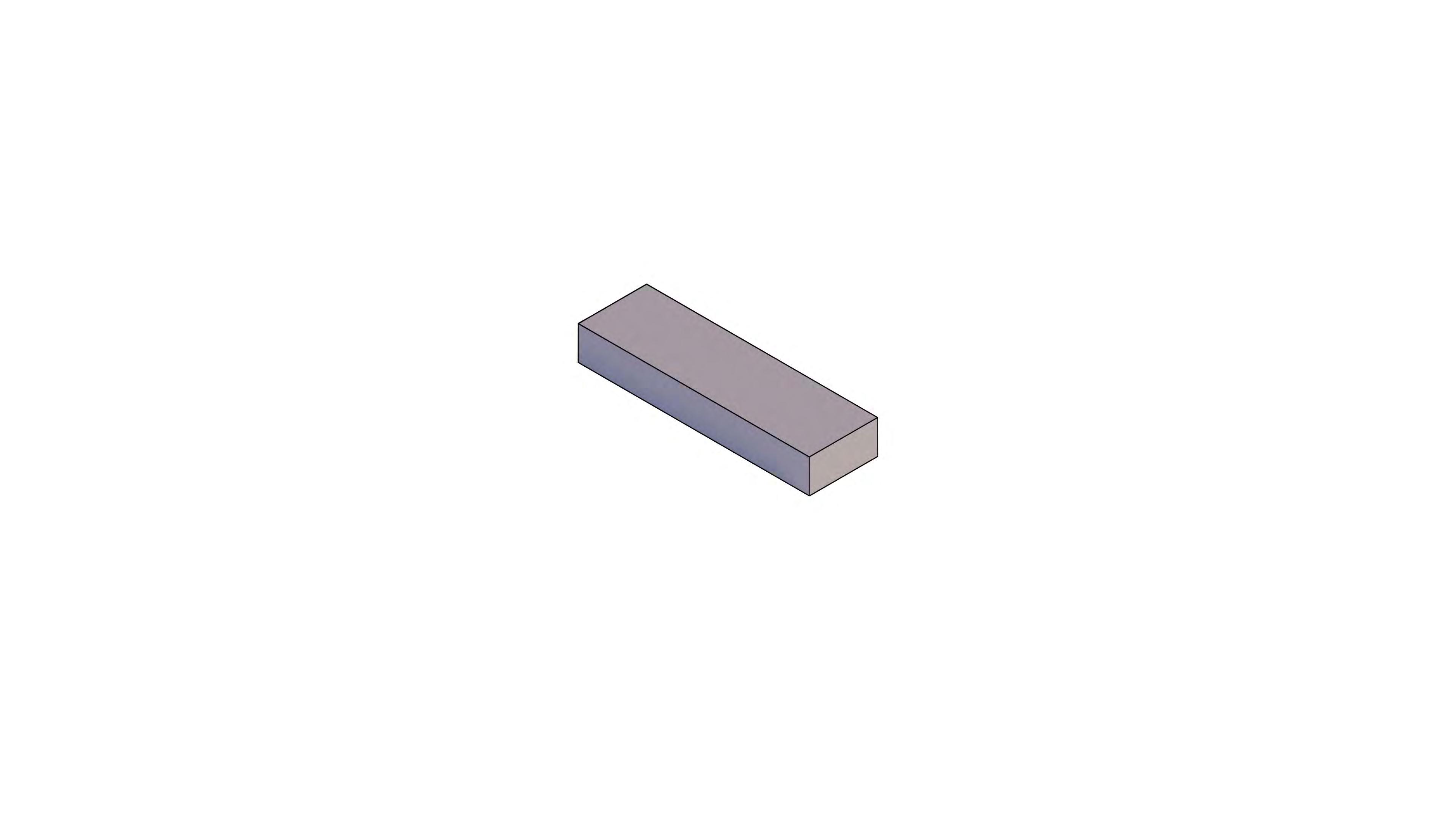
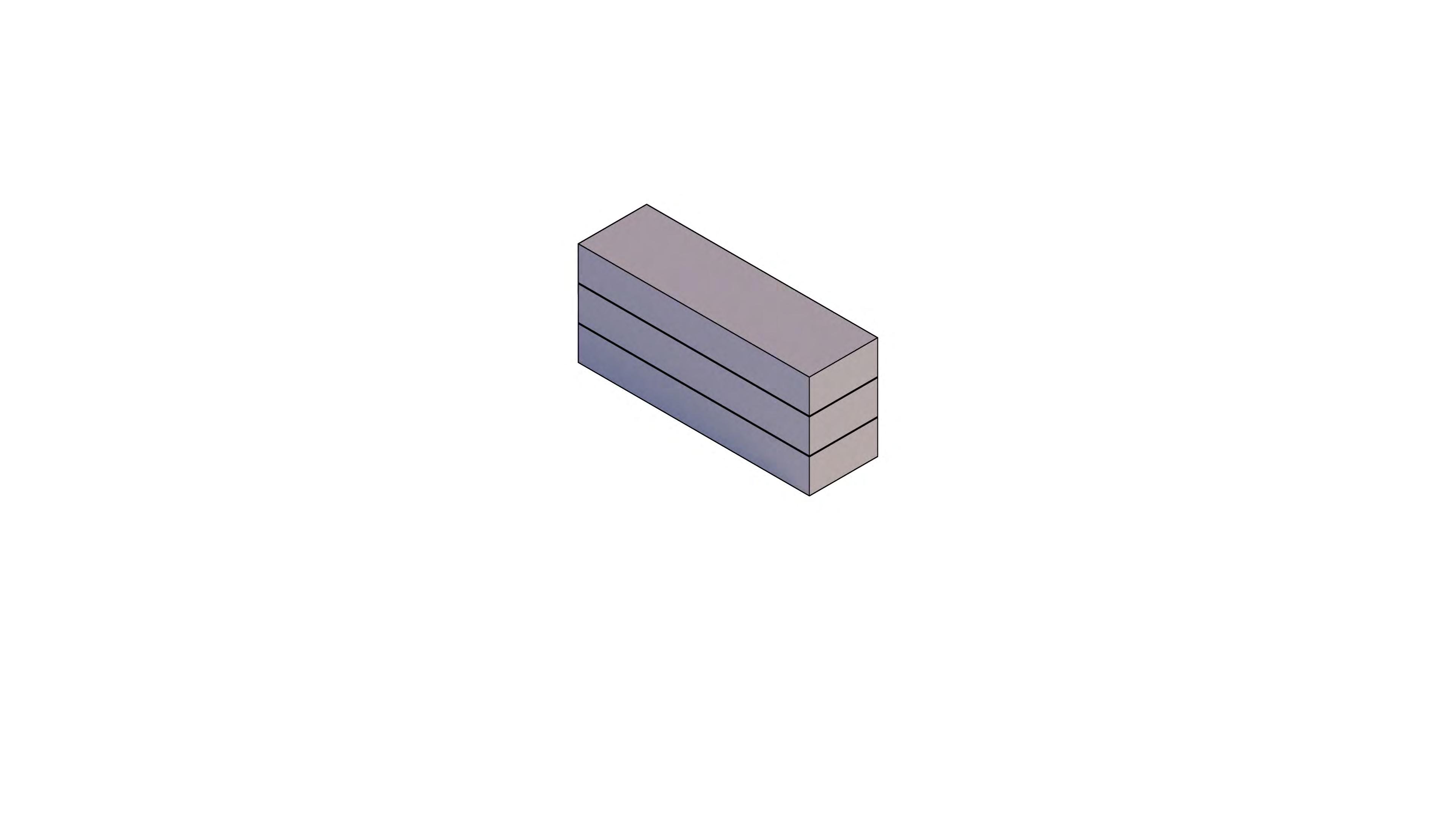
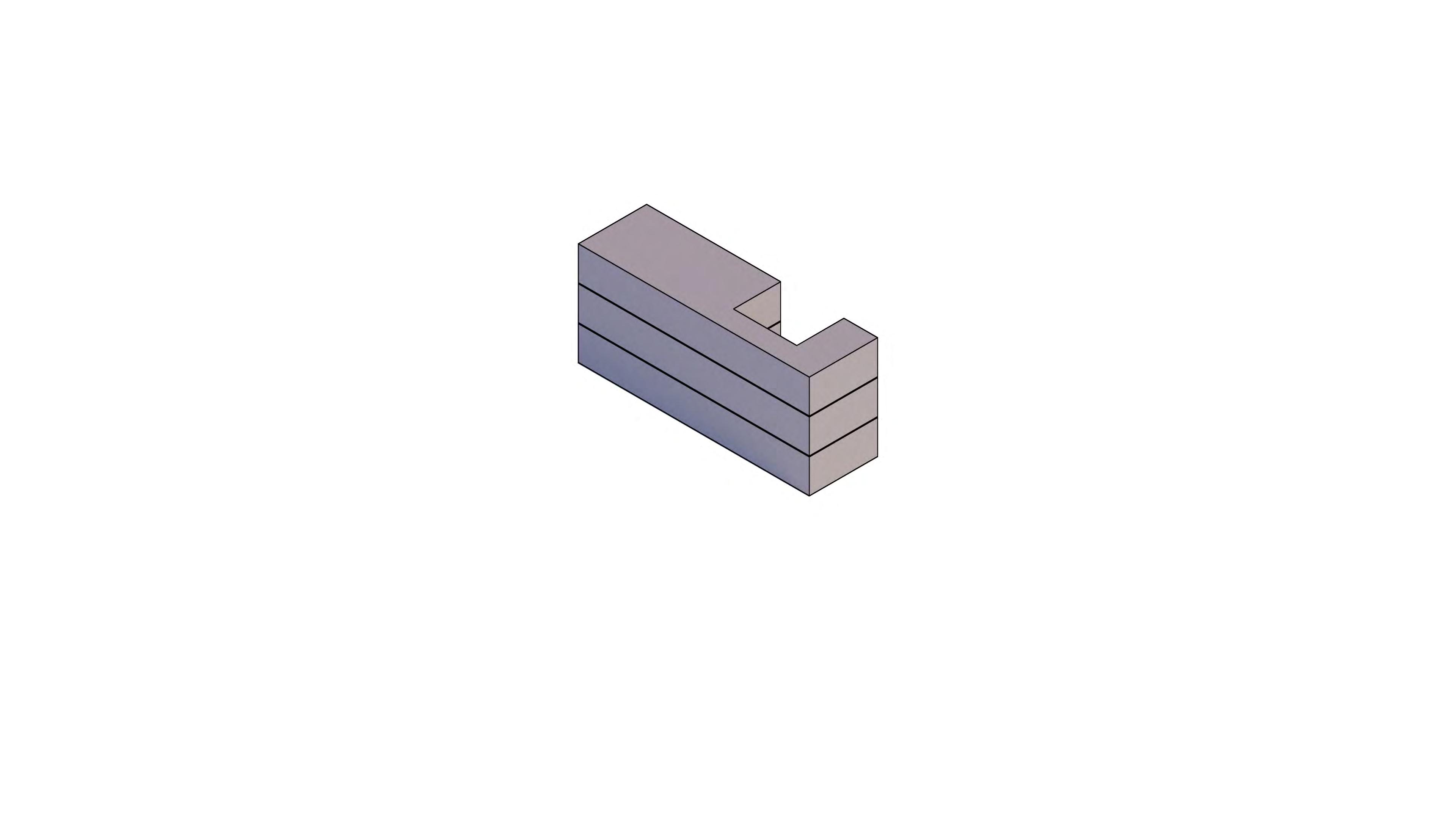

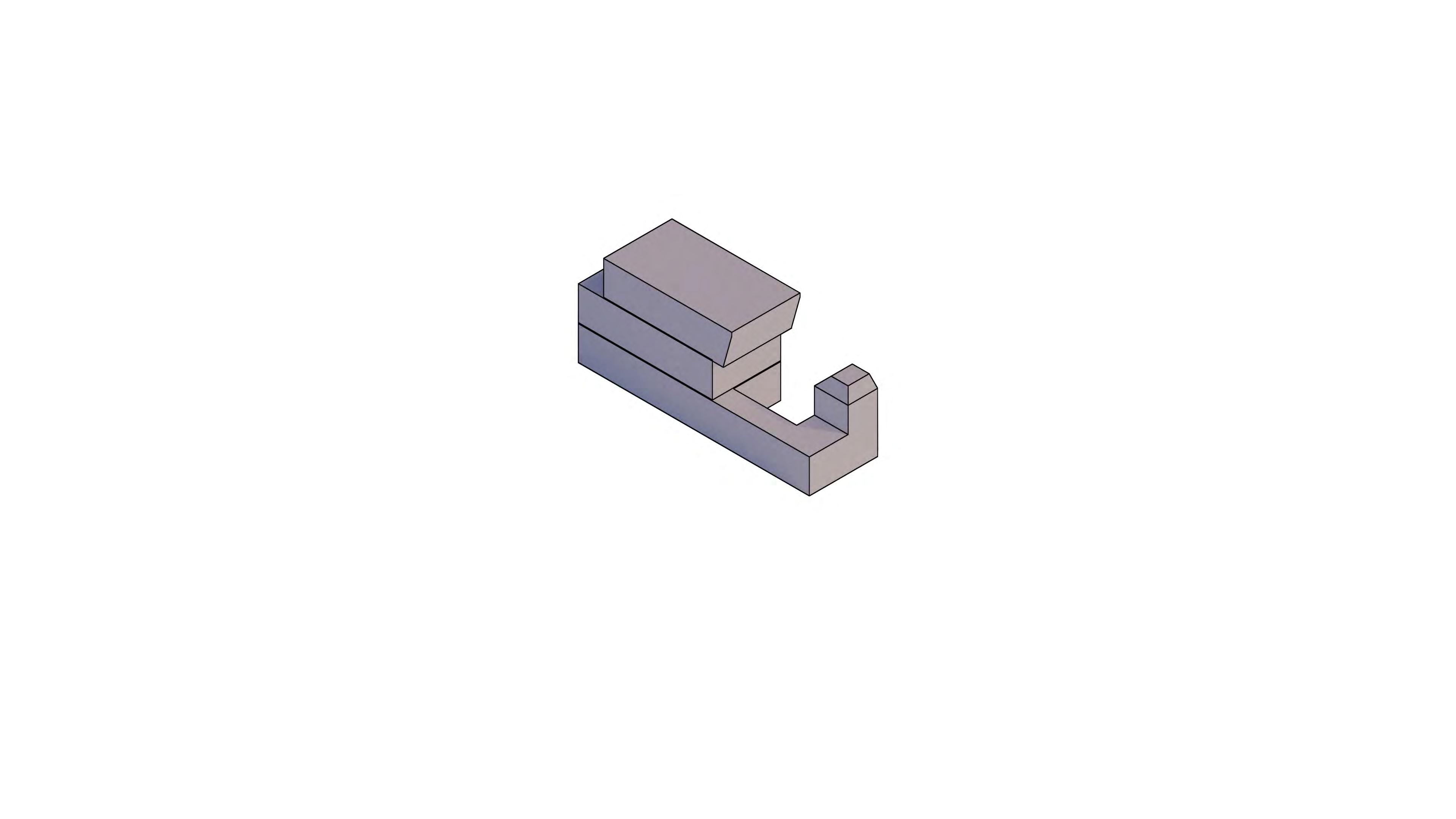

MOVEMENT DIAGRAM PER FLOOR
During the design of the project, an open layout for the plan of the house was chosen, as it offers a myriad of advantages, particularly in facilitating movement and enhancing the overall flow of the living space. An open layout creates a seamless transition between different areas of the house, fostering a sense of spaciousness and fluidity. It allows the eye to roam uninterrupted, traversing through the various zones of the house with ease. This lack of barriers encourages physical and visual movement, inviting occupants to explore and interact with their surroundings dynamically. The open layout inspires a sense of potential and possibility, allowing the audience to envision the space in its full spacious and fluid glory.
The open layout we’ve chosen not only promotes better circulation throughout the home but also enhances the sense of connectivity between indoor and outdoor spaces. This design choice allows for natural light and ventilation to penetrate deeper into the interior, contributing to a more comfortable living environment. It creates a harmonious living environment, where the boundaries between indoor and outdoor spaces are blurred.
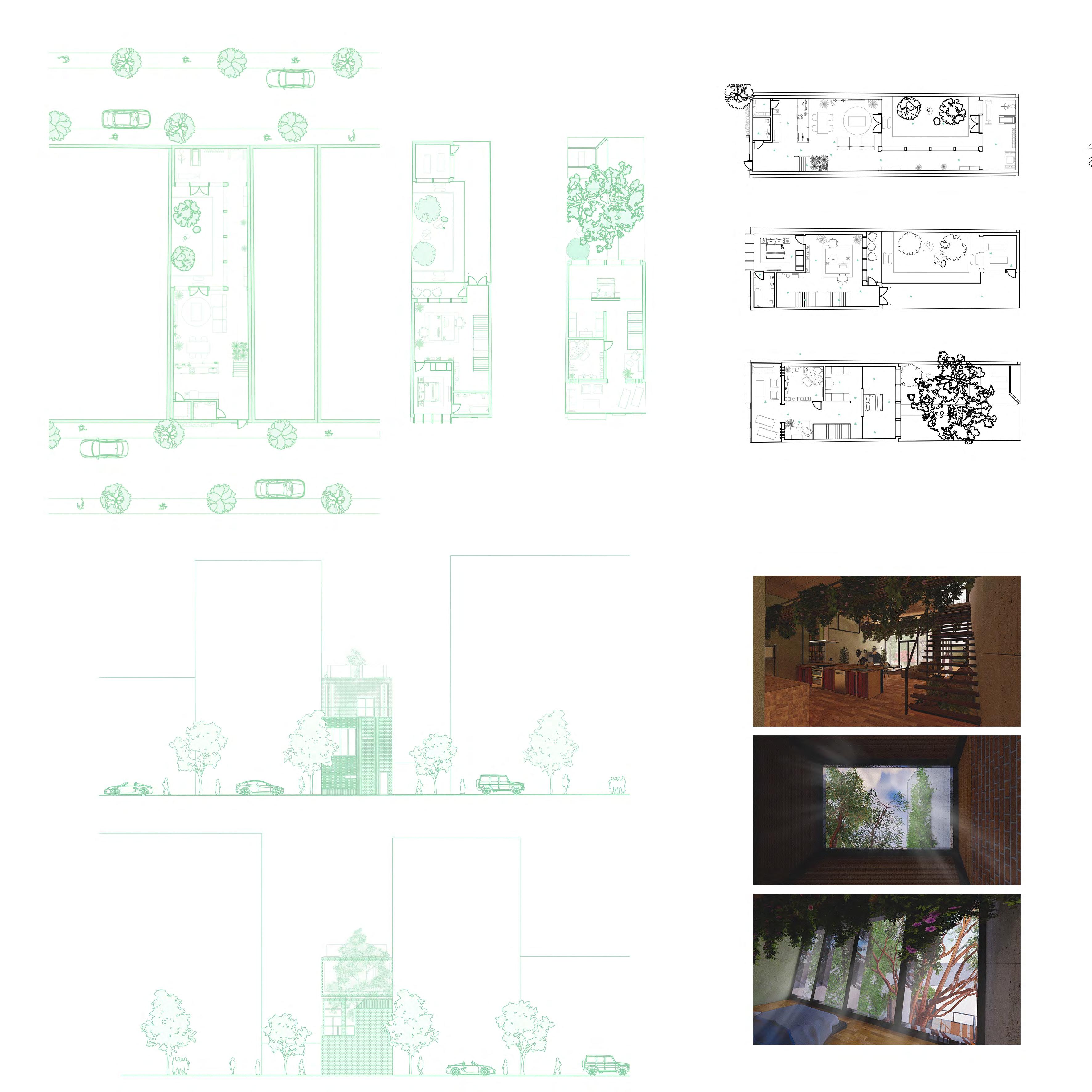





(1)Eucalyptus tree: chosen for its adaptability to the new environment of the home, thanks to its native origin in Australia.
(2)Various plants ( fern, aloe vera, snake plant, etc.): chosen because they can survive in high-humidity areas by absorbing much water from the surrounding environment. Their addition only increases the diversity of the biophilic environment created in the house’s design.
(3)Pipes: An indoor irrigation system was implemented to create a self-sustaining watering system for the hard-to-reach plants in the design.
(4)Ivy and ferns: trategically placed on wooden frames with protective material and dirt to mask the neighbouring building’s preexisting concrete appearance. The ivy was chosen for its adaptability and the precautions regarding the fact that is an inasive plant were taken. Additionally, the plants were used to create natural shadows on the facade of our design by being placed next to the windows.
(5)Black pine tree: This tree belongs to the’ evergreen’ family and is placed in the courtyard to enhance the zen and relaxing ambience yearround.
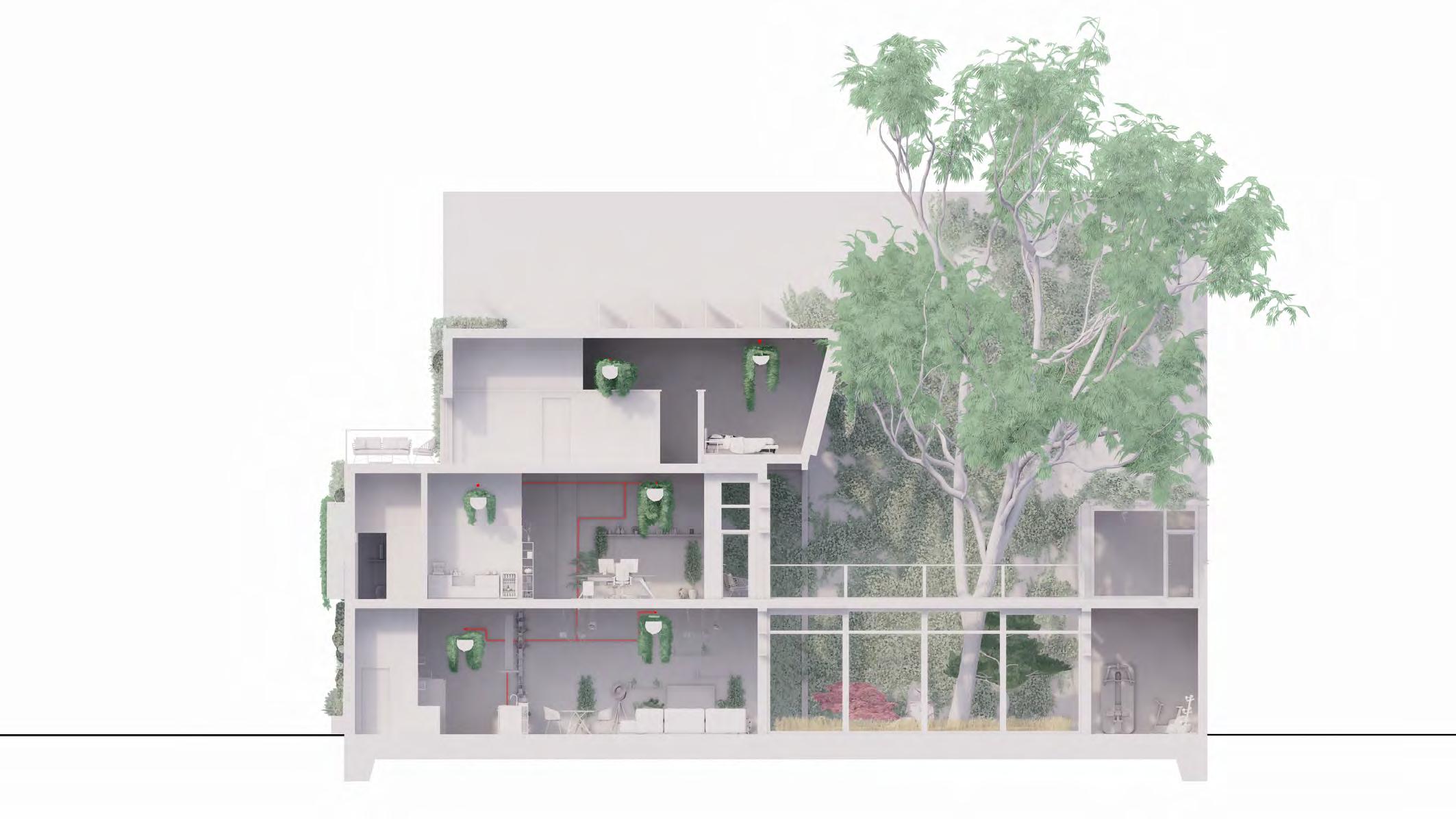
(6)Reed: meant to create a natural environment around the water feature in the garden for the small fauna that might populate it.
Environmental strategy elements
Solar panels have been installed to take advantage of Australia’s abundant sunlight and power the home using a renewable, green source. This move towards sustainable energy helps reduce carbon emissions and saves homeowners money on their electricity bills in the long run.
The house design is a testament to thoughtful planning, ensuring a continuous supply of fresh air throughout the day. This not only maintains high air quality but also creates a cool, comfortable living space during the scorching summer months. By strategically placing windows on opposite ends of the house, a refreshing draft is created, promoting a healthy and enjoyable living environment.
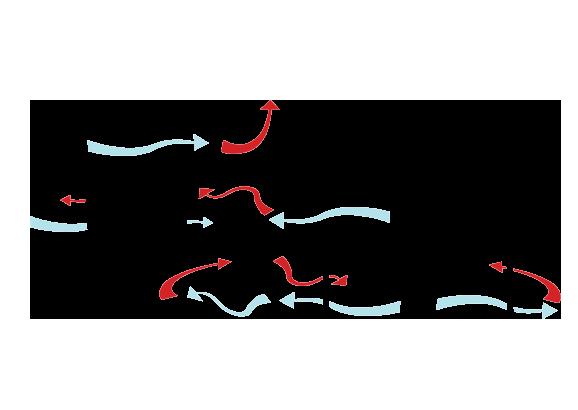

TECHNICAL AND MATERIALITY DIAGRAM
Passive house design has been a crucial aspect of this project, and we have strived to achieve it by making this building as green as possible. Our primary goal is to reduce the amount of energy used for cooling and heating the space, thus minimizing the carbon footprint that this project would produce in its lifespan. To achieve this, we have used sustainable materials such as SIP panels, which further drive the point of lowering the embedded carbon from the start of the build.
Over its life span, the project could be nearing 0 embedded carbon or even a negative carbon footprint, thanks to the use of solar panels on the home’s roof. During heat waves, a simple draft can create a comfortable place for the occupants to live in.
Additionally Australia’s moderate winters mean that heating should not be a significant issue because even a little bit of energy used to heat the space would suffice, thanks to the clever insulation in the walls. To ensure optimal insulation, all of the glass in the home is triple-glazed with argon in between the panels. This approach ensures minimal heat loss, making the space comfortable and energy-efficient.
In summary, our commitment to passive house design has been unwavering, and we have taken every possible measure to ensure that this building is eco-friendly and sustainable.
 Gypsum
Gypsum
